Rugbrød is a Danish Sourdough Rye Bread made with dark rye flour and a rye soaker. It is low in fat and generally doesn’t include any oil. This version is flavored with fennel seeds and honey instead of molasses. It’s a delightful rye loaf full of whole grains, flavor, and fiber.
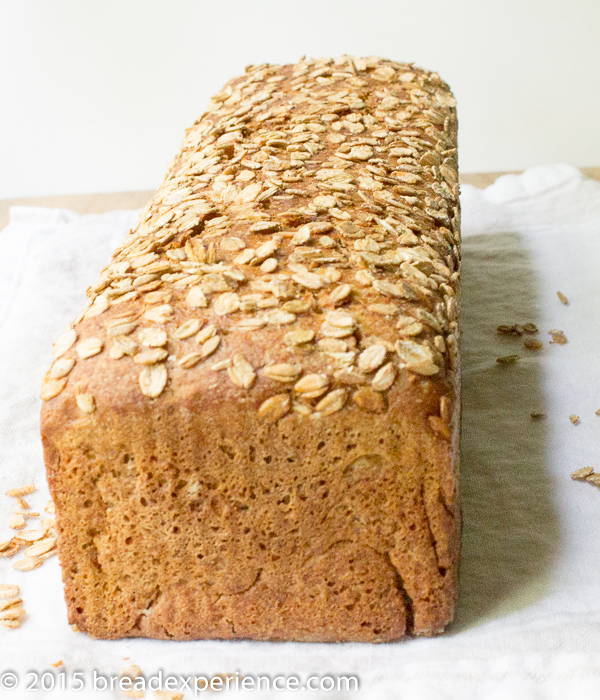
According to Wikipedia, Rugbrød is a common bread in Denmark and is usually made to resemble a long brown extruded rectangle, no more than 12 cm high, and 30–35 cm wide, depending on the type of bread pan in which it is baked. The ingredients typically include rye flour, cracked or chopped rye kernels, and seeds such as sunflower seeds, linseeds, or pumpkin seeds.
This bread reminds me of German Pumpernickel because it is baked in a Pullman pan. However, the Olde-Style Pumpernickel I made a couple of years ago, utilizes day-old bread, and is much darker and more strongly flavored than Rugbrød.
Rugbrød is made with dark rye, but it produces a lighter-colored loaf and is flavored with fennel seeds. It’s a delightful rye loaf full of whole grains, flavor, and fiber.
This was the BOM or bread of the month for July for the Artisan Bread Bakers. I made this loaf in July, but it took a few weeks to get the post up.
This version of Rugbrød was shared by David of HearthBakedTunes. The original formula is from Richard Miscovich’s book, From the Wood-Fired Oven: New and Traditional Techniques for Cooking and Baking with Fire.
On a side note, I attended a workshop taught by Richard at the Maine Kneading Conference several weeks ago, and he has some wonderful bread formulas.
David encouraged us to use black strap molasses; however, I didn’t have any so I used honey instead. It produced an even lighter-colored and milder-flavored loaf which I enjoyed. I used sprouted rye instead of rye chops and sprinkled rye flakes on top of the loaf before baking. Using sprouted rye was a tip from Ansona, one of the bakers in the Artisan Bread Bakers FB group. Due to the inclusion of the sprouted rye, I added less water in the soaker and the final dough.
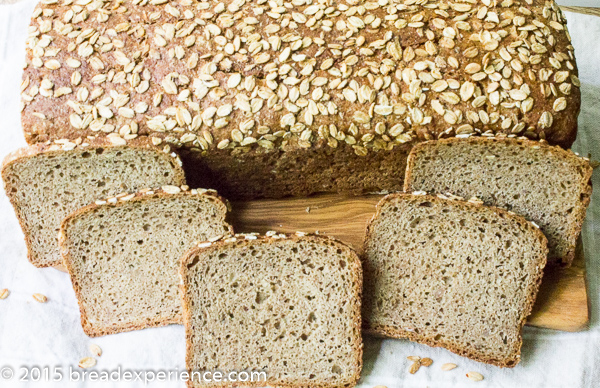
Although I typically mix my dough by hand whenever feasible, for this bread, I used a stand mixer. David of HearthBakedTunes mentioned that he had made it by hand a couple of times, but it’s a pretty sticky mess so if you have a mixer, it makes the process easier.
I baked the loaf in a 13 x 4-inch Pullman Pan.
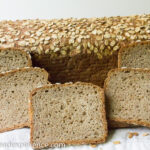
Rugbrød
- Yield: 1 Loaf 1x
Description
Rugbrød is a Danish Sourdough Rye Bread made with dark rye flour and a rye soaker. This version is flavored with fennel seeds and honey instead of molasses. It’s a delightful rye loaf full of whole grains, flavor and fiber.
Ingredients
Rye Sour:
- 300g Whole Rye Flour
- 245g Water
- Starter (rye or liquid levain) 55g
Levain:
- 103g All-purpose Flour
- 103g Water
- 14g Liquid Levain
Soaker:
- 75g Rye Chops, Sprouted Rye, or multigrain mix (I used sprouted rye see notes)
- 120g Water
Final Dough:
- 130g all-purpose Flour
- 200g Whole Rye Flour
- 105g Water
- 2.5g (1/2 tsp) instant yeast
- 16g salt
- 225g soaker
- 220g Levain
- 600g Rye Sour
- 15g Honey
- 4.5g whole fennel seed, coarsely ground
- Rye flakes for sprinkling on top of dough, optional
Instructions
- Rye Sour: Mix the rye sour ingredients, cover and let sit for 12 -15 hours at 75 degrees F.
- Levain: Mix the levain, cover and let sit for 8-10 hours at 77 degrees F.
- Soaker: Combine the water and sprouted rye (or rye chops if using), cover and let soaker sit for at least 2 hours at room temperature. Drain the excess water before incorporating the soaker into the final dough.
- Final Dough: Combine all the ingredients for the final dough in a stand mixer and mix on slow speed for 4 minutes, increase to medium speed and mix 3-4 minutes. You will need to scrape down the sides of the bowl often. Gluten strands should be visible.
- Fermentation: There is no primary fermentation and no pre-shaping the dough is placed in a well greased and floured pullman pan. Smooth the dough out with a rubber spatula cover and allow to proof for 50 minutes. It should rise to within 1 inch of the top of a full sized pullman pan.
- Baking: This bread requires several temperature adjustments. It is first baked covered at 500 degrees for 15 minutes, the temperature is the reduced to 400 degrees for another fifteen minutes. Remove the cover and reduce to 325 and bake for an additional 45 minutes. If sides are not firmed up remove from pan and finish on sheet pan.
- Cooling: Allow this bread to cool for 24-48 hours. The closer to 48 the better, this helps to avoid a gummy crumb and allows the flavor to fully develop. Cool completely, then wrap in bakers linen.
Notes
Adapted from Richard Miscovich’s From the Wood-Fired Oven: New and Traditional Techniques for Cooking and Baking with Fire
Liquid levain (starter), stiff starter or rye sourdough starter:
A liquid levain refers to a starter that is maintained at 100 to 125% hydration whereas a stiff starter is maintained at 50 to 60% hydration. A rye starter or culture is made and fed completely with rye flour at 100% hydration. The liquid levain could have rye flour in it, but it is typically made with a good portion of white flour.
Sprouting the rye berries:
In the afternoon, rinse and drain the rye berries several times, then cover them with water and let them sit, covered with a cloth, at room temperature for 3-5 hours.
Rinse the berries again, and let them drain. Cover and let them sit at room temperature.
In the evening, rinse the berries again and let them drain in a colander overnight. You should see tiny shoots starting to appear, but if not, let them sit a little longer, or as long as they are soft and pliable, go ahead and use them in the soaker.
- Category: Sourdough Rye Bread
- Cuisine: Bread
Happy Baking!
Cathy
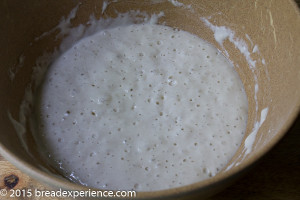
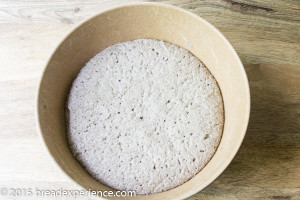
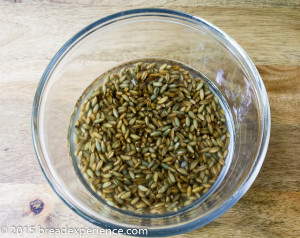

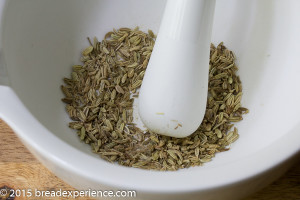
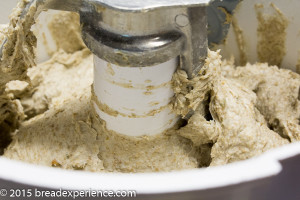
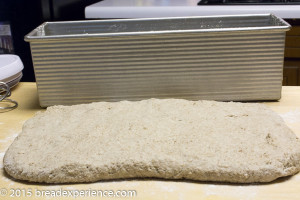
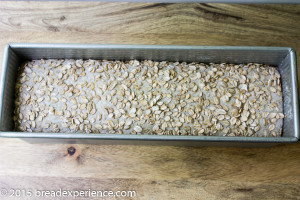
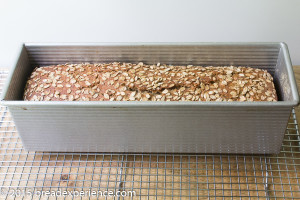
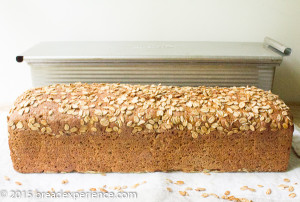
Carol Moller says
Where can I buy a rye bread pan like you used. Thank you
Cathy says
Hi Carol,
Thank you for your inquiry. Here is the link Pullman Pan
I added a link on the post as well. I used the 13 x 4-inch Pullman pan for this bread.
Happy Baking!
Cathy